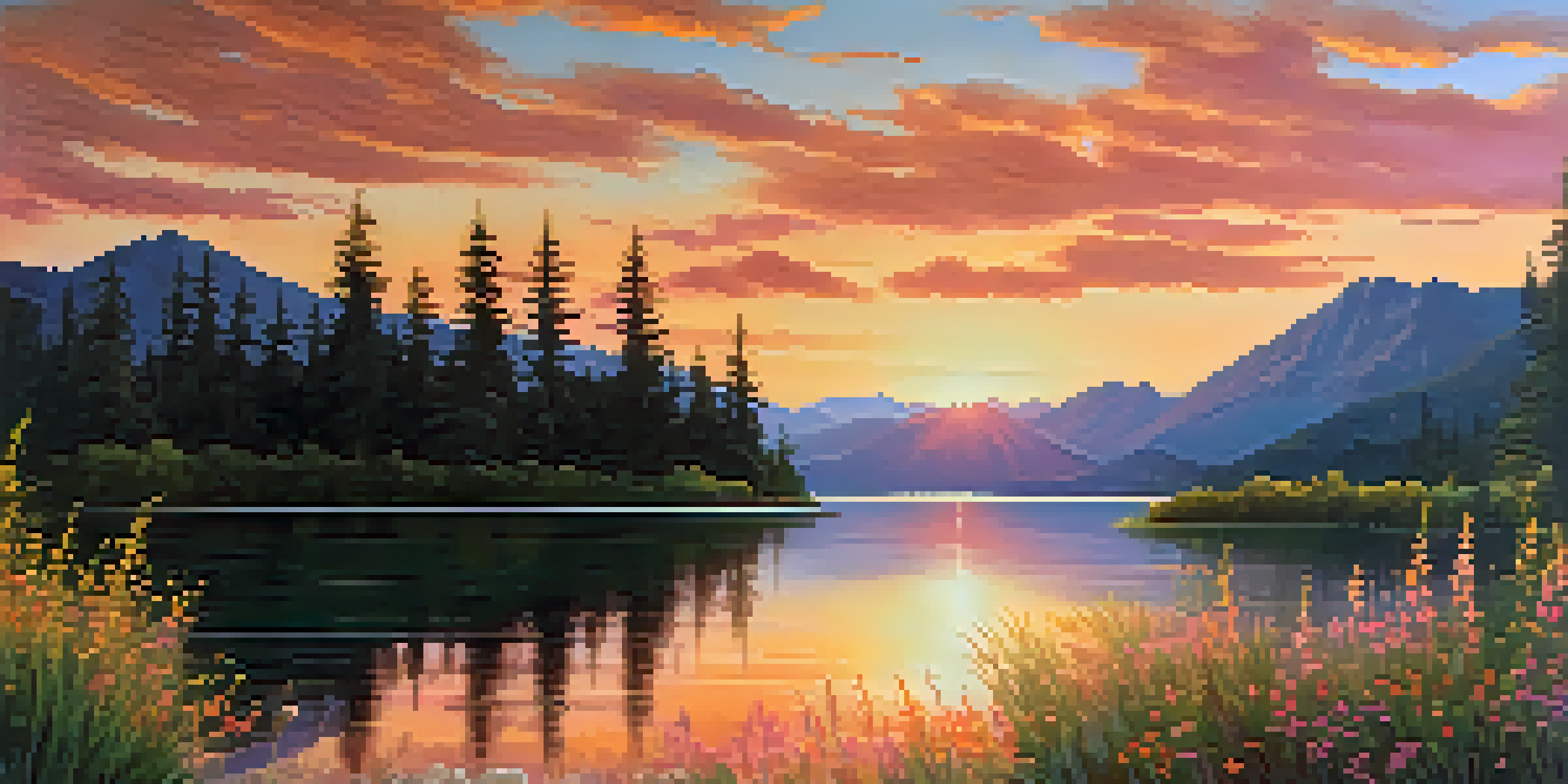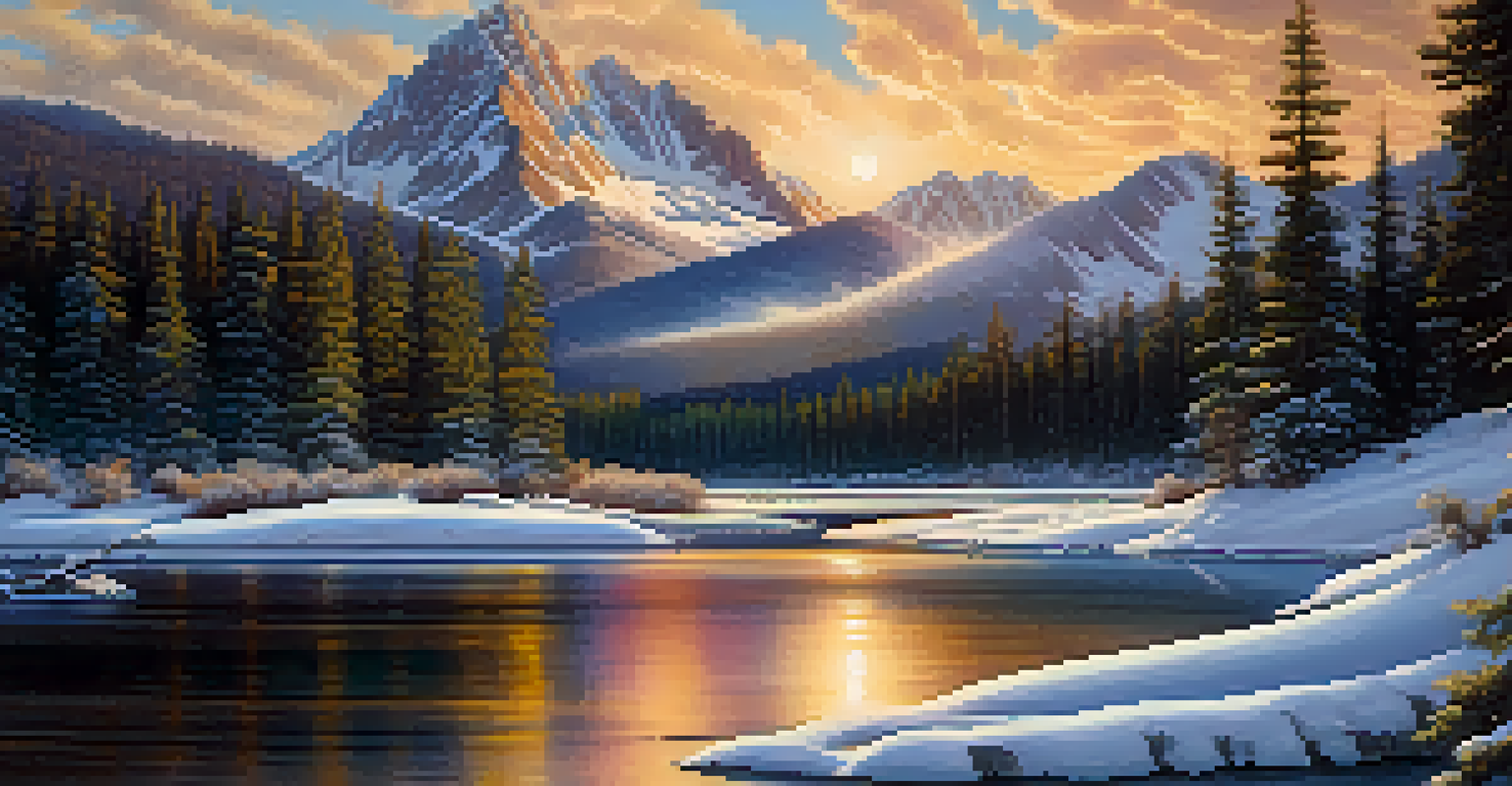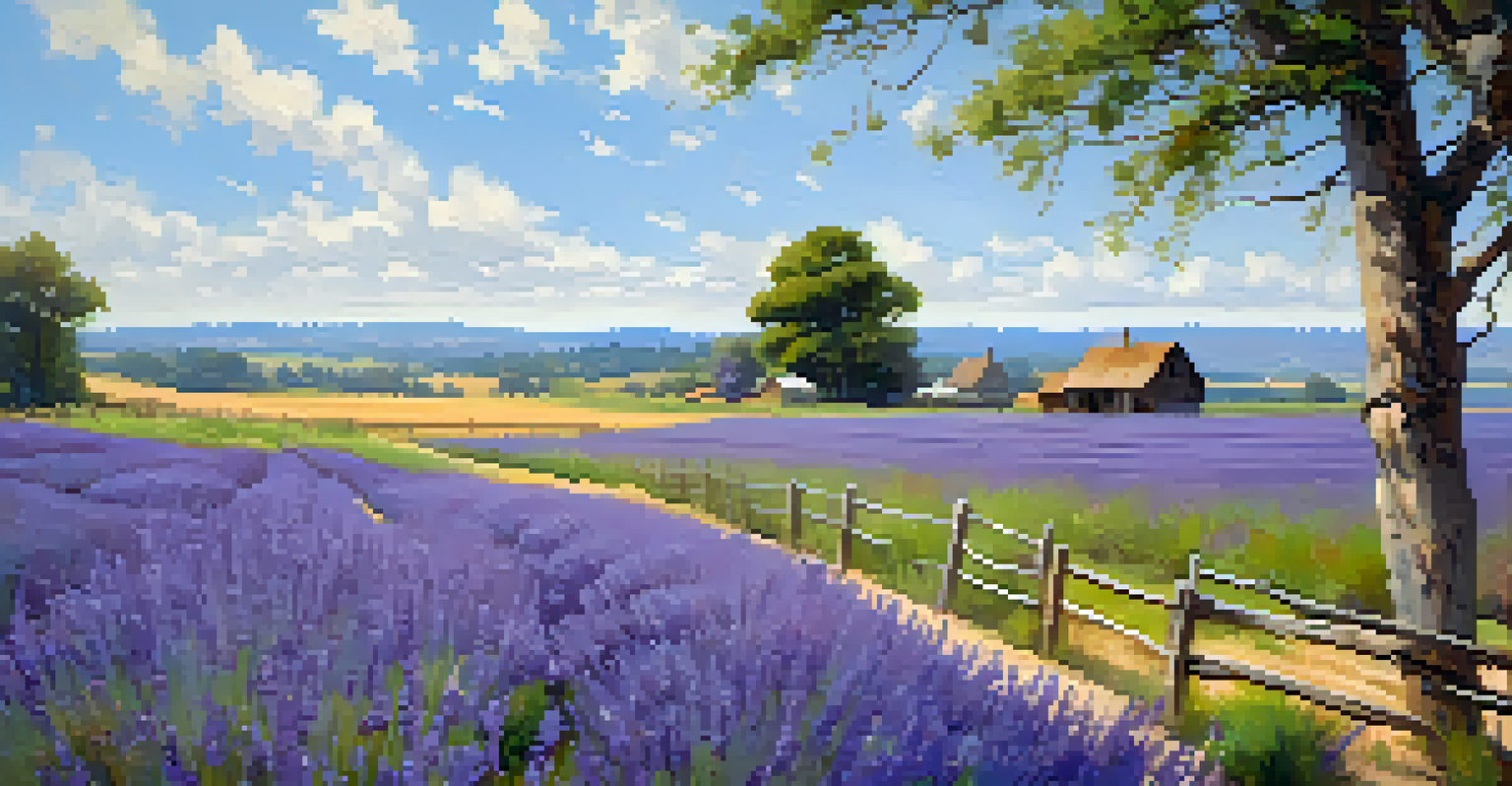The Best Practices for Editing Landscape Photography

Understanding the Importance of Editing in Landscape Photography
Editing is a crucial step in landscape photography that enhances your images. It's not just about making a photo look pretty; it's about conveying the true essence and mood of the scene. Without editing, even the most stunning landscapes can fall flat, losing their impact and emotion.
Editing is not just about making a photo look pretty; it's about conveying the true essence and mood of the scene.
Imagine capturing a breathtaking sunset, but the colors appear dull in the photo. Editing allows you to bring those vibrant hues back to life, making the viewer feel as if they were right there with you, experiencing the moment. This transformation can turn a good photograph into a great one.
Moreover, editing helps to correct any technical issues, such as exposure problems or lens distortions. By refining these aspects, you ensure that your final image is not only visually appealing but also technically sound.
Choosing the Right Editing Software for Landscape Photos
Selecting the right software is the first step in your editing journey. Popular options like Adobe Lightroom and Photoshop offer powerful tools tailored for photographers. Lightroom is excellent for batch processing and organizing photos, while Photoshop provides more advanced editing capabilities.

For those seeking budget-friendly alternatives, free programs like GIMP or online editors can also do the trick. While they may lack some features of premium software, they can still help you achieve impressive results with your landscape images.
Editing Enhances Landscape Photos
Editing is essential for capturing the true essence and mood of landscape imagery.
Ultimately, the best software is one that aligns with your editing style and needs. Take the time to explore different options and find the one that feels intuitive for you.
Utilizing RAW Files for Maximum Editing Flexibility
When it comes to landscape photography, shooting in RAW format is a game-changer. RAW files capture a wider range of colors and details compared to JPEGs, allowing for more extensive adjustments during editing. This means you can tweak exposure, contrast, and color balance without degrading the image quality.
Photography is the story I fail to put into words.
Think of RAW files as a digital negative—like a painter's canvas before the brush touches it. This flexibility lets you experiment freely, making it easier to achieve your desired outcome.
Once you’ve finished editing, you can export your image in JPEG or TIFF format for sharing or printing. This way, you preserve the high quality of your original shot while still having a versatile file for various uses.
Mastering Exposure and Contrast Adjustments
Exposure and contrast are fundamental elements in landscape photography that can dramatically change the mood of your image. When editing, start by adjusting the exposure to ensure your photo isn’t too dark or too bright. A well-exposed image draws the viewer in, inviting them to explore every detail.
Next, focus on contrast. Increasing contrast can add drama and depth, while reducing it can create a softer, more ethereal look. The key is to find a balance that enhances your photo without making it look unnatural.
Choosing the Right Software Matters
Selecting software that fits your editing style can significantly improve your workflow and results.
Using tools like histograms in your editing software can help you visualize these adjustments. A histogram shows the distribution of light in your photo, guiding you to make informed decisions about exposure and contrast.
Enhancing Colors for Stunning Landscape Imagery
Colors play a pivotal role in landscape photography, setting the mood and attracting attention. During editing, take the time to enhance colors thoughtfully. Vibrancy and saturation adjustments can help bring out the beauty of the landscape, but be cautious—overdoing it can lead to unnatural results.
Consider using selective color adjustments to target specific areas of your image. For instance, if the sky looks dull, you can enhance its blues without affecting the other elements. This technique allows you to create a more dynamic and visually appealing composition.
Additionally, applying a color grading technique can give your landscapes a unique feel. Whether you want a warm, golden hour effect or a cool, moody vibe, color grading can help you achieve that desired atmosphere.
Sharpening and Noise Reduction Techniques Explained
After editing your landscape photos, sharpening is essential to bring out fine details. Proper sharpening enhances the textures in your image, making it pop. However, it's vital to use sharpening tools judiciously to avoid introducing artifacts that can distract the viewer.
On the other hand, noise reduction is crucial, especially in images taken in low light. Digital noise can create unwanted graininess, detracting from the overall quality. Most editing software offers noise reduction features that can smooth out these imperfections while preserving detail.
RAW Files Offer Editing Flexibility
Using RAW format allows for more extensive adjustments without degrading image quality, enhancing your creative options.
Finding a balance between sharpening and noise reduction is key. Aim for a clean, crisp image without sacrificing the intricate details that make your landscape unique.
Creating a Compelling Composition with Cropping
Cropping can significantly impact the composition of your landscape photos. By removing distracting elements from the edges, you can focus the viewer's attention on the main subject. This simple adjustment often enhances the storytelling aspect of your image.
Consider the rule of thirds when cropping; this guideline suggests dividing your frame into a grid and placing key elements along those lines or at their intersections. This technique can lead to a more balanced and engaging composition.

Remember, cropping isn’t just about removing parts of your image; it’s also an opportunity to reframe your shot creatively. Don’t hesitate to try different crop ratios to see what works best for each unique landscape.